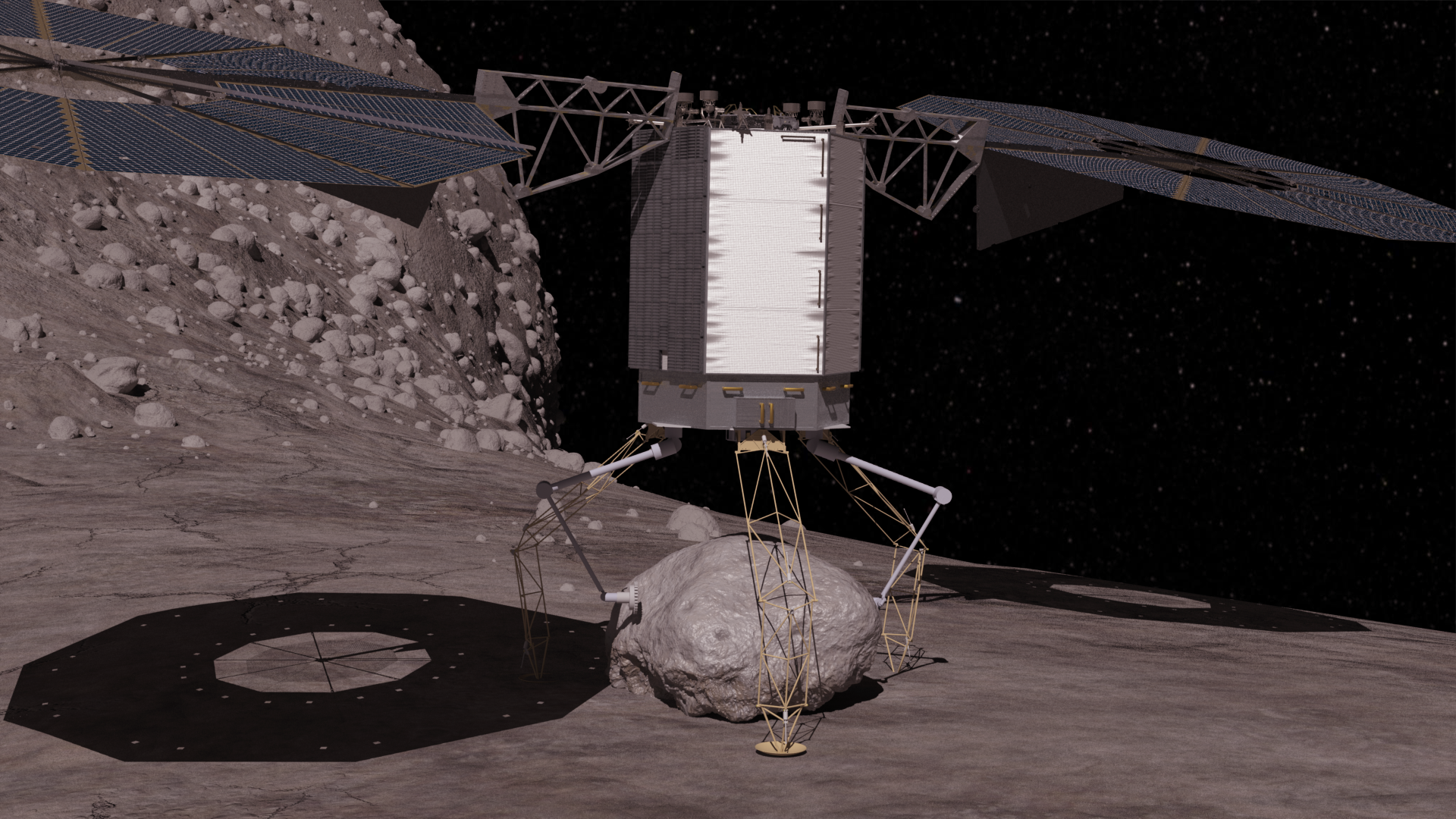NASA's Asteroid-Capture Mission May Test New Method to Defend Earth

NASA's bold plan to park an asteroid near the moon may also test out a new way to protect Earth from dangerous space rocks.
Last year, the agency announced that it intends to tow a near-Earth asteroid into a stable lunar orbit, where it could be visited repeatedly by astronauts for research and exploration purposes. NASA officials are still ironing out the details of the mission, which may bag up an entire small space rock or snag a boulder off the surface of a large asteroid.
If NASA decides to go with the boulder option, the asteroid-capture mission will also include a planetary-defense demonstration, providing the first in-space test of a so-called "enhanced gravity tractor," officials said. [Images: NASA's Asteroid-Capture Mission]
Given enough lead time, asteroids on a collision course with Earth can be safely deflected using a handful of methods. One of these is the gravity tractor technique, in which a robotic probe flies alongside a space rock for months or years, gradually nudging it off course via a slight gravitational tug.
The greater the shepherding probe's mass, the stronger its gravitational pull is. And poaching a boulder off a potentially hazardous asteroid would allow a deflection mission to increase its mass significantly without having to pay any additional launch costs.
"We'd go into this enhanced gravity tractor position after we retrieve the boulder and demonstrate that we have even more gravity attraction capability by doing that," Lindley Johnson, program executive for NASA's Near-Earth Object (NEO) observations program, told reporters in March.
NASA has identified about a dozen promising candidates for the asteroid-capture mission, Johnson added — six or so for each of the two options. The best target for the boulder-grab mission may be Itokawa, a 1,750-foot-long (530 meters) space rock that was visited by Japan's Hayabusa probe in 2005.
Breaking space news, the latest updates on rocket launches, skywatching events and more!
The space agency wants astronauts to visit the redirected asteroid by 2025, to meet an exploration deadline set by the White House. In 2010, President Barack Obama directed NASA to get people to a near-Earth asteroid by 2025 and then on to the vicinity of Mars by the mid-2030s.
The asteroid-capture mission remains in a "preformulation" phase at the moment, as NASA is still gathering data and sorting through ideas. The space agency hopes to have a basic mission concept in place by around the end of the year, officials have said.
In addition to the gravity tractor method, incoming space rocks could also be knocked off course with a direct hit by a "kinetic impactor," researchers say. (These techniques could also be combined in two coordinated space missions, slamming an asteroid with an impactor probe and then sending a gravity tractor out to finish the job.)
More extreme measures might be necessary for extremely large asteroids and space rocks detected with little warning time. In such cases, a nuclear bomb might be humanity's best — and perhaps only — option.
Follow Mike Wall on Twitter @michaeldwall and Google+. Follow us @Spacedotcom, Facebook or Google+. Originally published on Space.com.
Join our Space Forums to keep talking space on the latest missions, night sky and more! And if you have a news tip, correction or comment, let us know at: community@space.com.

Michael Wall is a Senior Space Writer with Space.com and joined the team in 2010. He primarily covers exoplanets, spaceflight and military space, but has been known to dabble in the space art beat. His book about the search for alien life, "Out There," was published on Nov. 13, 2018. Before becoming a science writer, Michael worked as a herpetologist and wildlife biologist. He has a Ph.D. in evolutionary biology from the University of Sydney, Australia, a bachelor's degree from the University of Arizona, and a graduate certificate in science writing from the University of California, Santa Cruz. To find out what his latest project is, you can follow Michael on Twitter.

